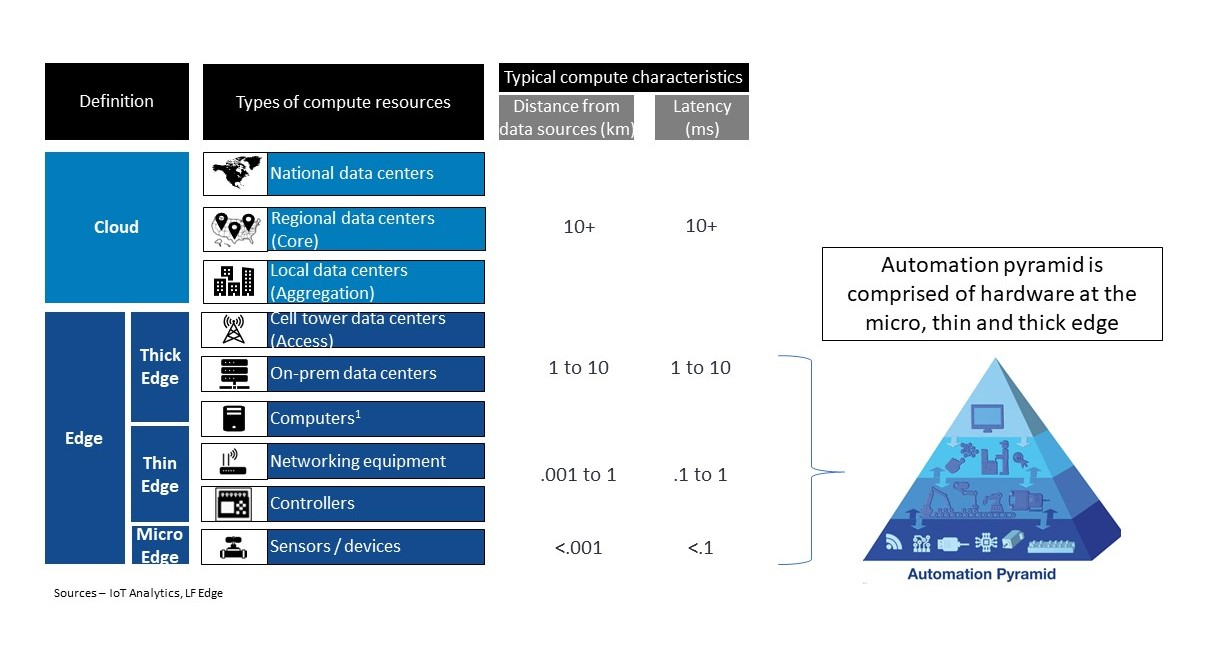Industrial Edge Solutions: Why Are They Necessary?
In a recent blog about IIoT, we discussed the importance of collecting useful data from IIoT installations.
In order for organizations to take advantage of the valuable insights that data can provide, the proper solutions must first be in place to connect, transport and process this data. Especially in mission-critical applications, it’s imperative that industrial edge solutions securely deliver fast, reliable and accurate results.
What Are Industrial Edge Solutions?
The term “edge” describes a location for computational activity. Instead of relying on the cloud that exists at a remote data center to do computing work, the edge is a computing location where an edge device or local network connects to a wider area network.
The precise location of the edge depends on your perspective. For example, manufacturing plants often consider the edge to be the hardware components deployed within the automation pyramid (computers, controllers, sensors, etc.).

View image here.
The term “industrial edge” refers to the location of data-handling activities and network operations in industrial environments. Because of its local deployment, the industrial edge typically hosts workloads that require real-time decision making, enhanced security and high reliability.
If “edge” refers to the computing location, then “edge computing” describes the data processing that occurs at the edge. To reduce latency (delays), costs and security risks, edge computing supports the deployment of applications that analyze data and produce useful insights at the location where data is generated.
When edge computing is used to process operational data in an industrial environment, this is referred to as “industrial edge computing.” By moving them closer to the devices that generate data, industrial edge computing reduces the number of processes happening in the cloud and enterprise systems. When industrial edge computing hardware is supplemented with edge applications and complementary services, the result is an “industrial edge solution.”

View image here.
Why Are Industrial Edge Solutions Necessary?
The ability to process data locally in an expedient, reliable and safe manner to provide valuable insights is the clear benefit offered by industrial edge solutions; however, it’s helpful to discuss the technological changes that resulted in industrial edge solutions becoming fundamental tools for realizing IIoT and Industry 4.0 use cases.
Five operational technology trends have emerged to strengthen the value of industrial edge solutions:
- Virtualization and containerization: Applications can now be packaged and deployed efficiently.
- Open-source operating systems: The development of new applications is faster and less expensive.
- Plant-wide Ethernet: This facilitates greater bandwidth availability with faster transmission speeds.
- Ubiquitous cloud: This ensures constant connectivity for organizations.
- Low-cost compute: As processing power increases over time, the cost of CPUs continues to decrease so more workloads can run on fewer devices.
Together, these trends have significantly bolstered the value of industrial edge solutions. It’s possible to design systems with higher computing power that can run a greater number of readily available workloads (via applications)—all at a lower cost. Moreover, the Industrial Ethernet network in which an industrial edge solution is deployed is better equipped to support it. Finally, workloads can be executed locally rather than offsite or in the cloud.
As a result, organizations can successfully accomplish the following with IIoT and Industry 4.0 installations:
- Hardware-agnostic applications: Historically, workloads have only run natively on specific hardware; however, virtualization and containerization have made it possible for workloads to be deployed as applications on an industrial edge computing platform.
- Flexible architecture: The desire to do more with greater amounts of data has increased the complexity of workloads deployed in industrial environments. Industrial edge solutions provide organizations with the flexibility to run these complex workloads closer to where the data is generated. Secure, reliable industrial networks ensure data is effectively transported between and amongst IT and OT systems.
- Cost reduction: As organizations continue to seek ways to decrease costs, they’re taking a hard look at industrial operations. The ability to deploy low-cost, high-power computing decreases the amount of hardware required for IIoT and Industry 4.0 installations. Furthermore, by running additional workloads on premises through industrial edge solutions, companies can minimize the costs associated with transmitting, storing and processing greater amounts of data in the cloud.
In our next industrial edge computing blog, we’ll look at how industrial edge solutions can be applied to a specific use case, exploring the challenges faced by a hypothetical company and how industrial edge solutions can help. Subscribe to our blog so you don’t miss it!
Belden's Senior Product Manager for Edge Solutions, Jeremy Friedmar, helped me write this blog, and he is a tremendous resource who can address any of your edge questions. If you want to know more about this topic, email me ([email protected]) or Jeremy ([email protected]).
